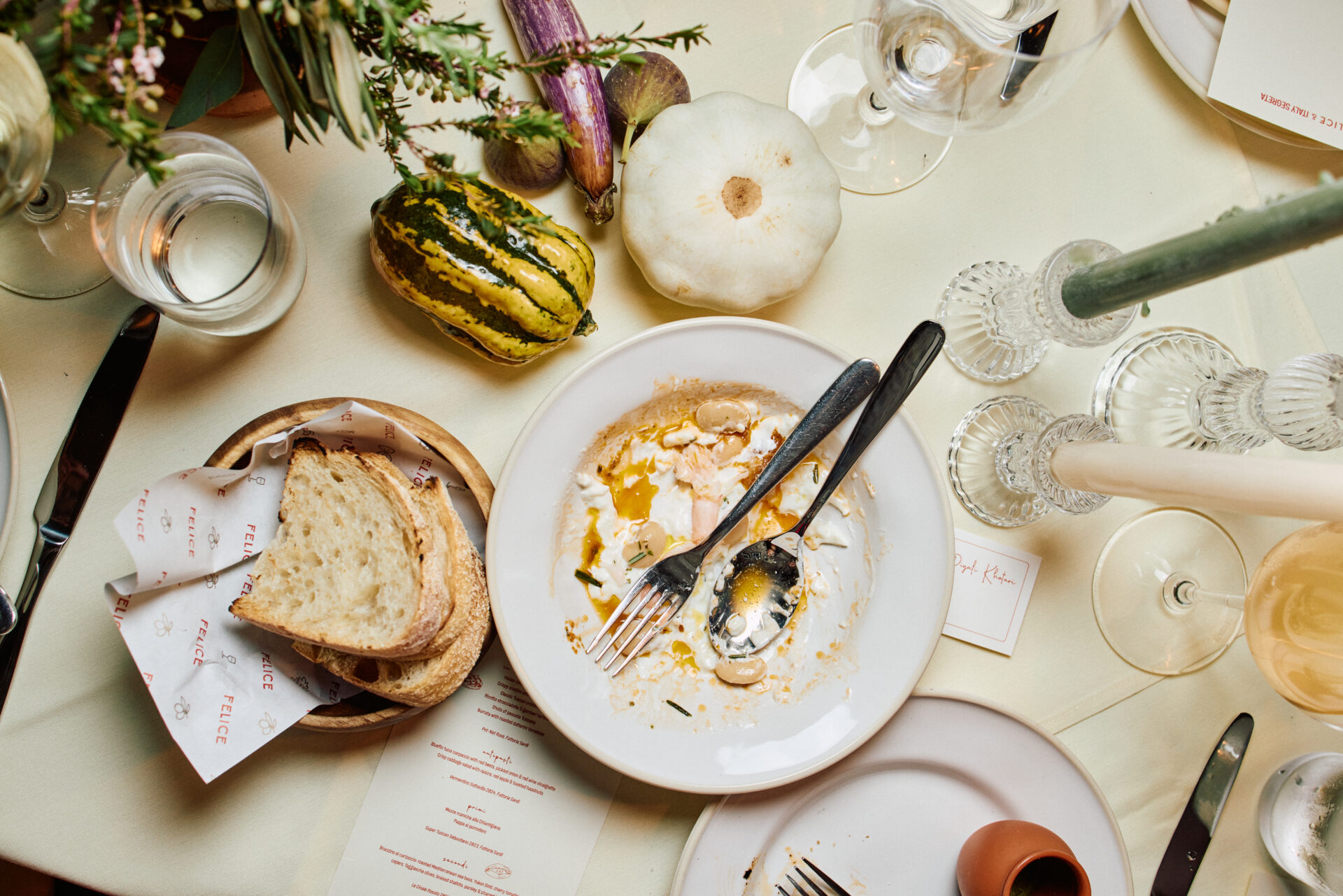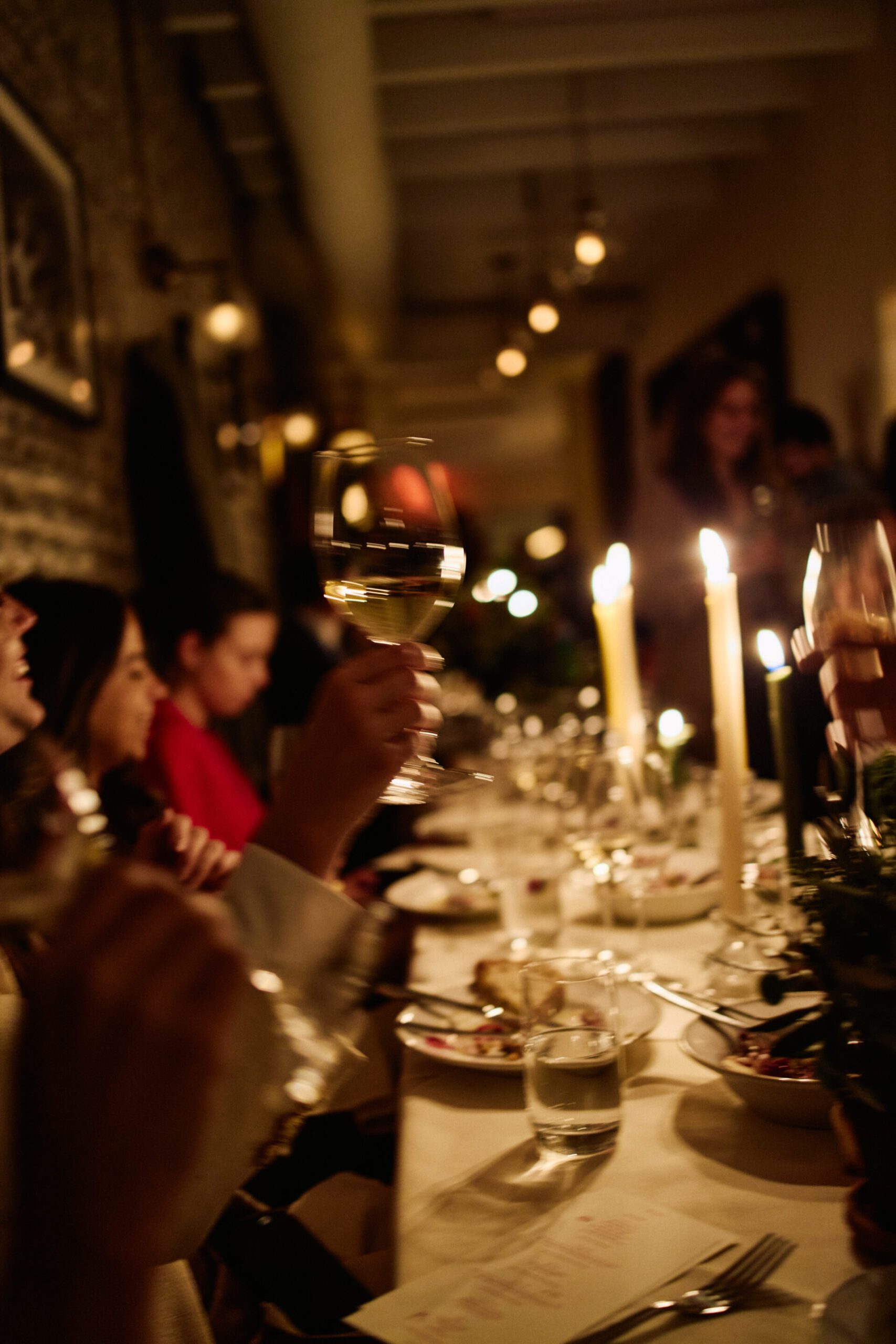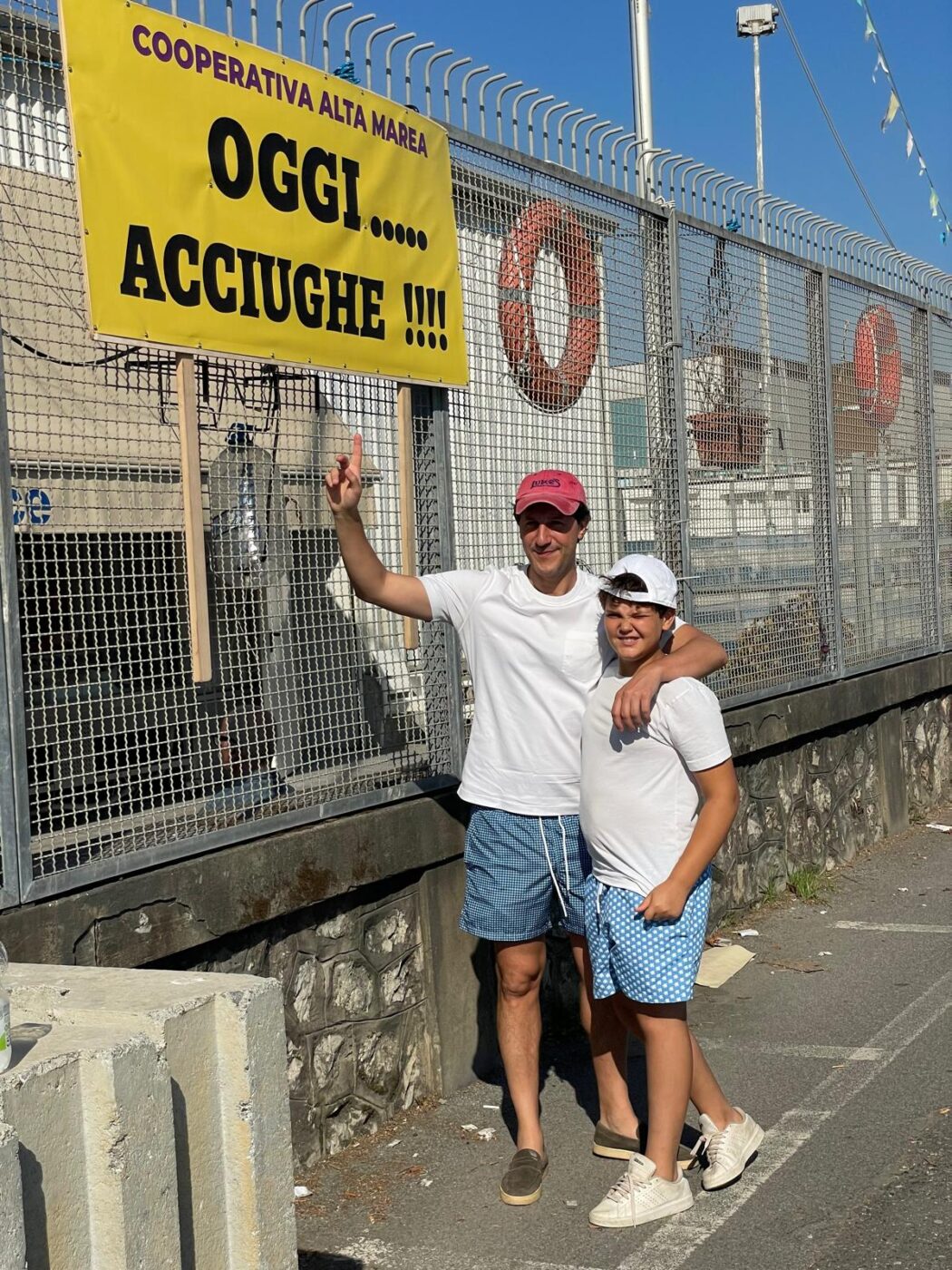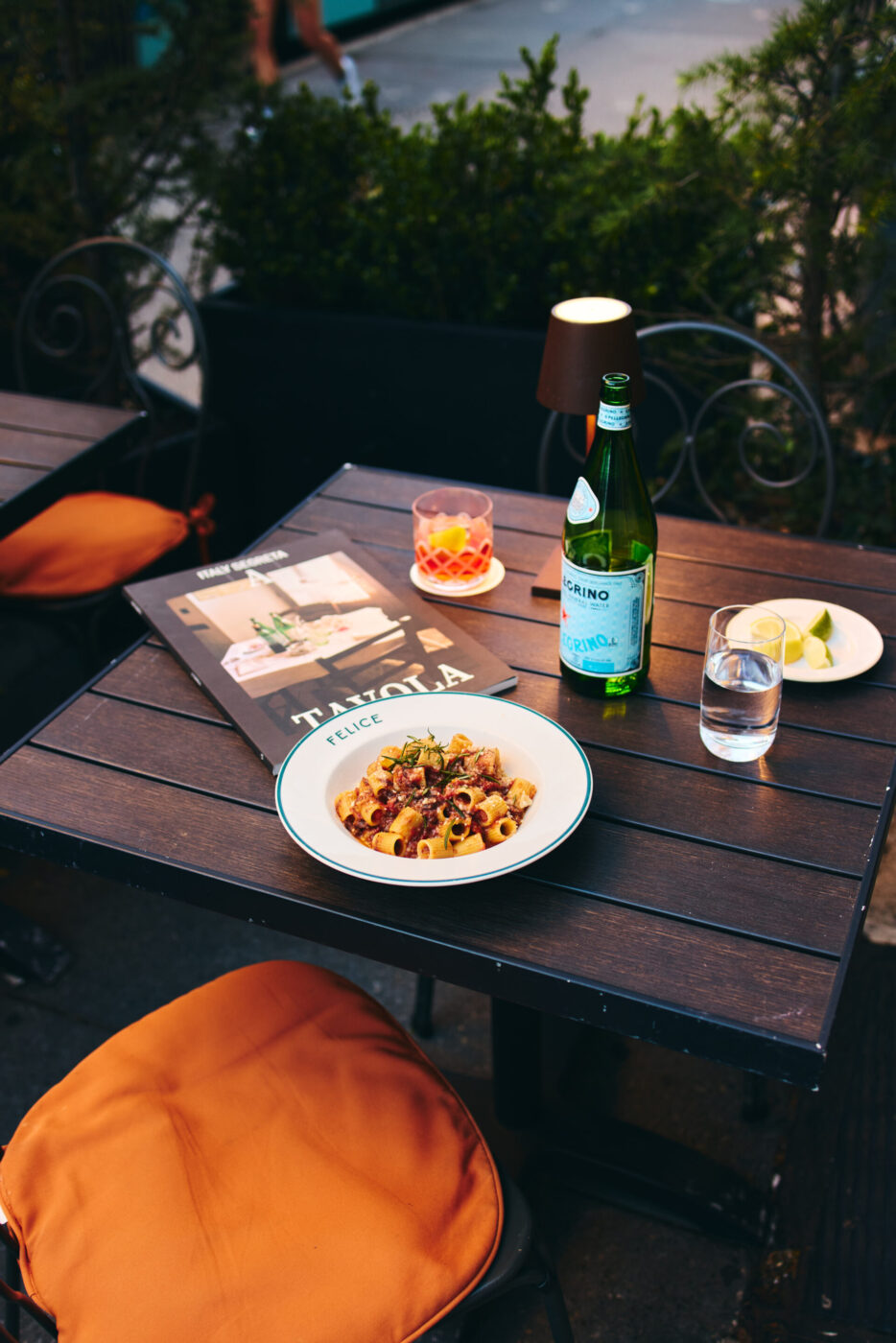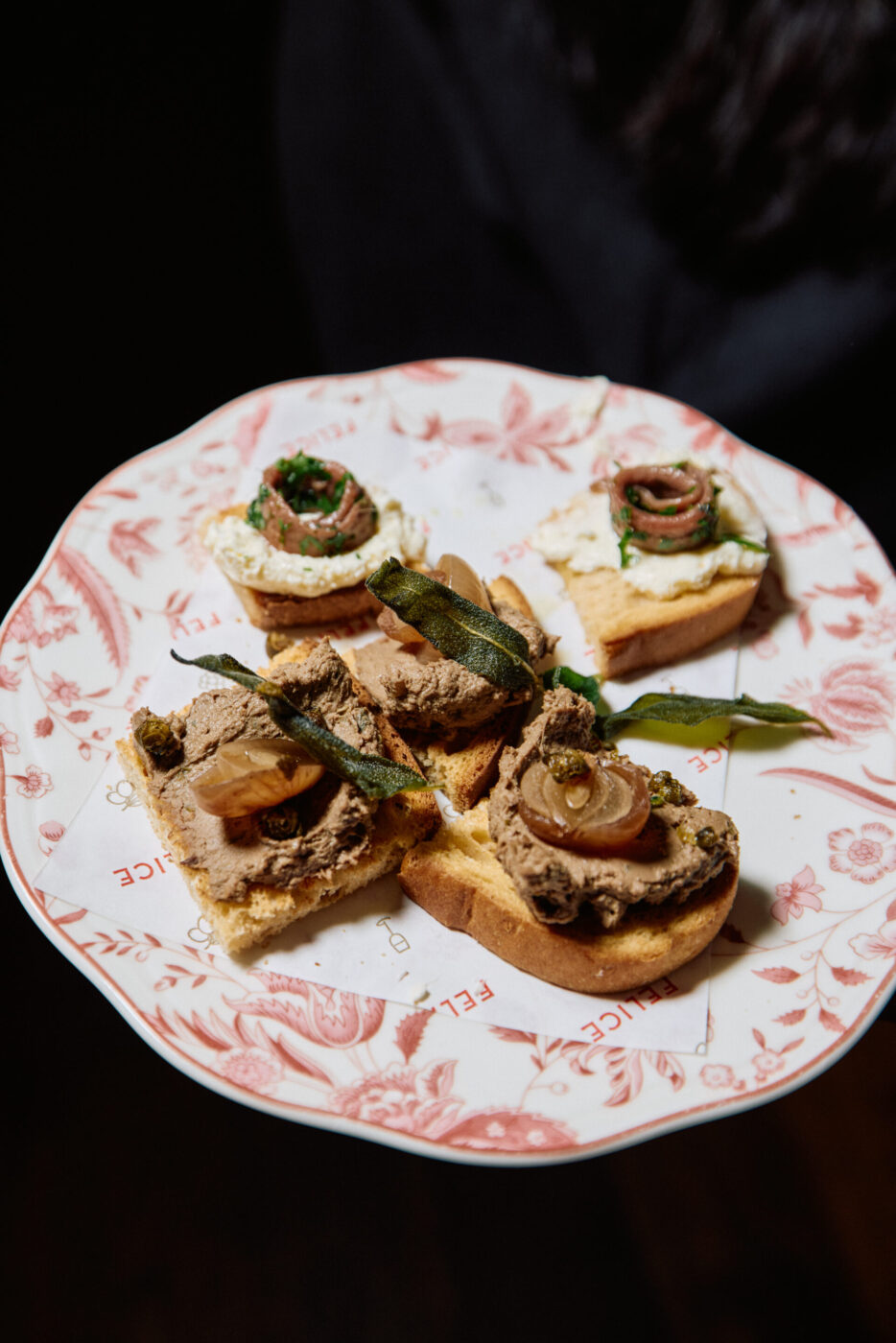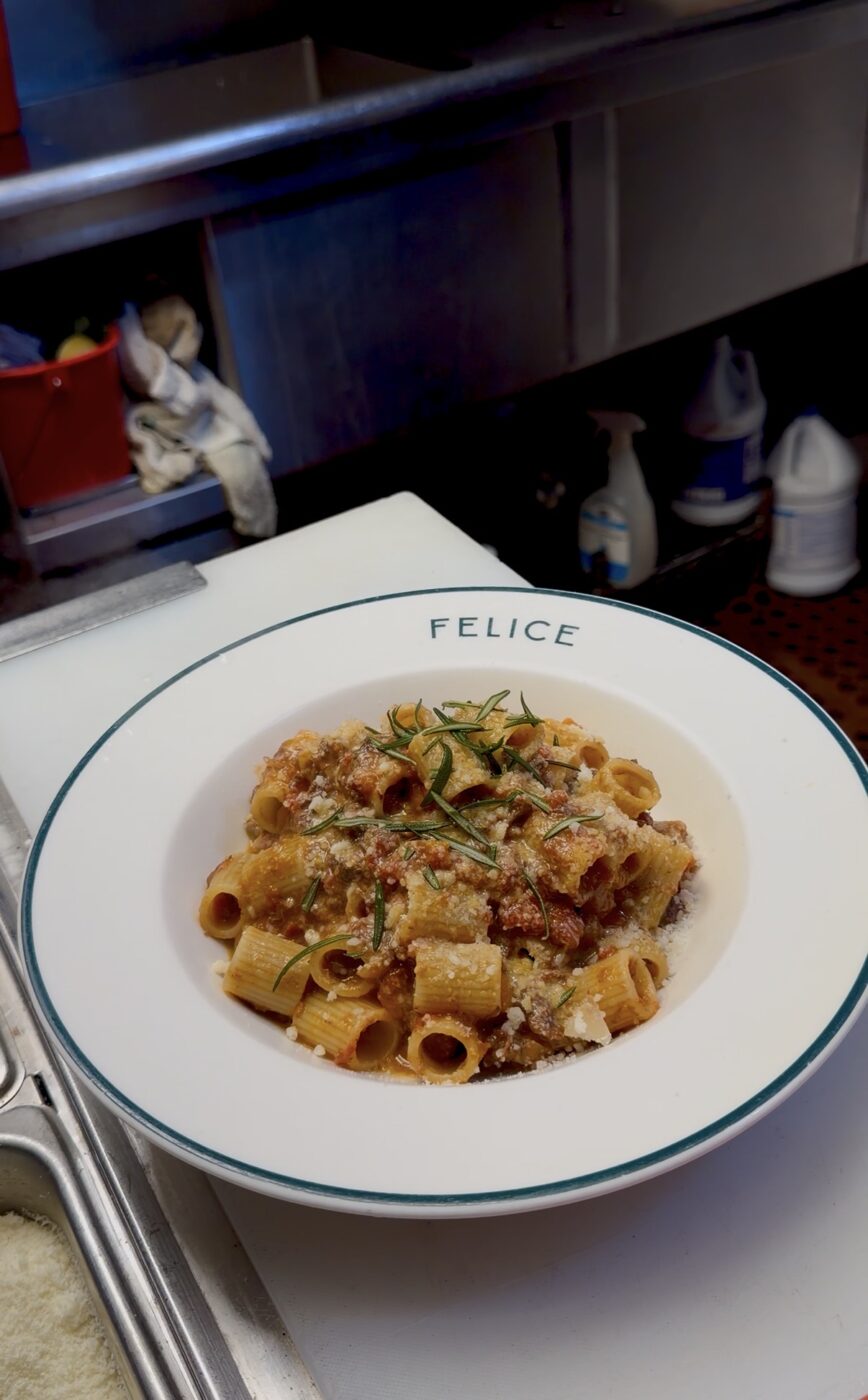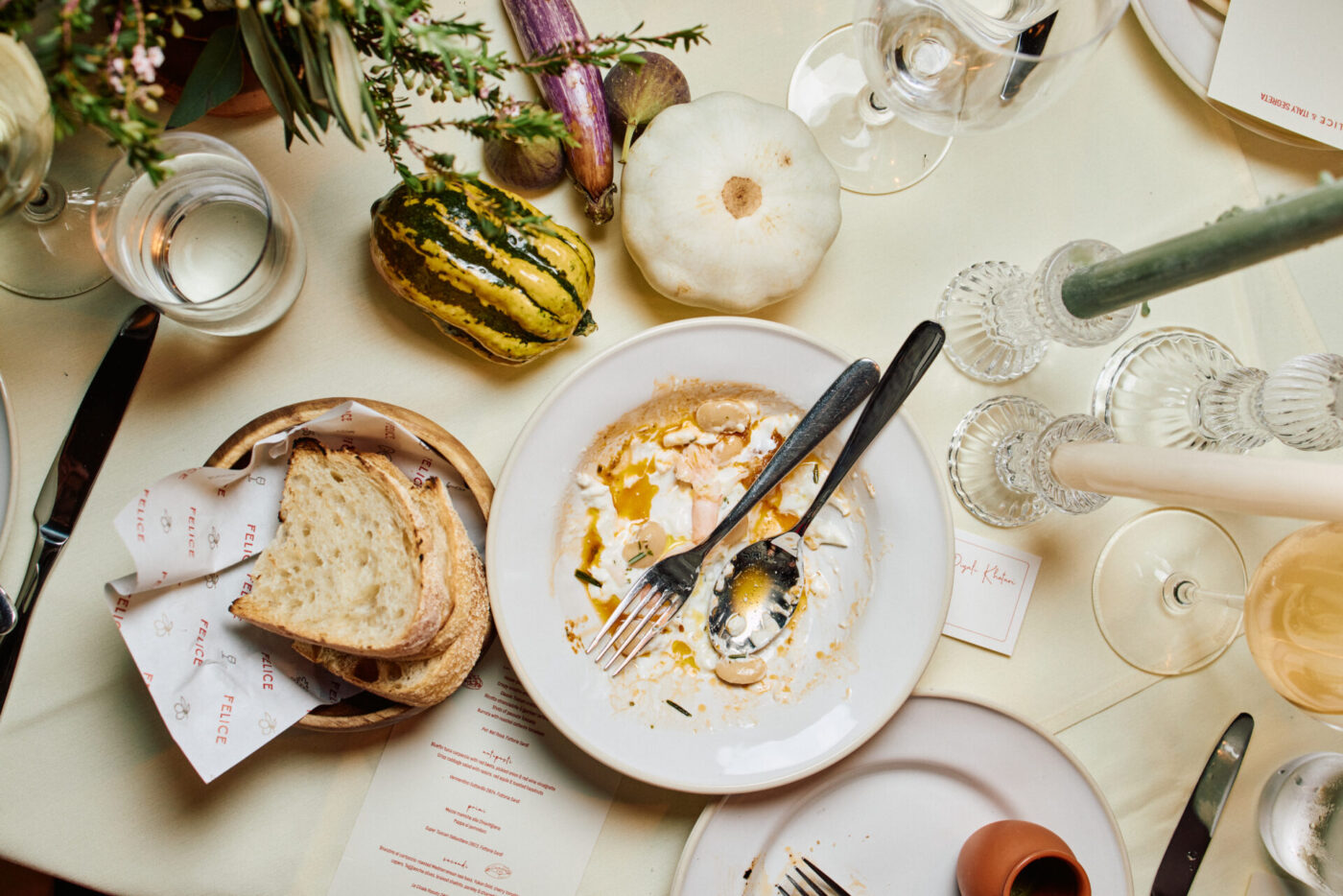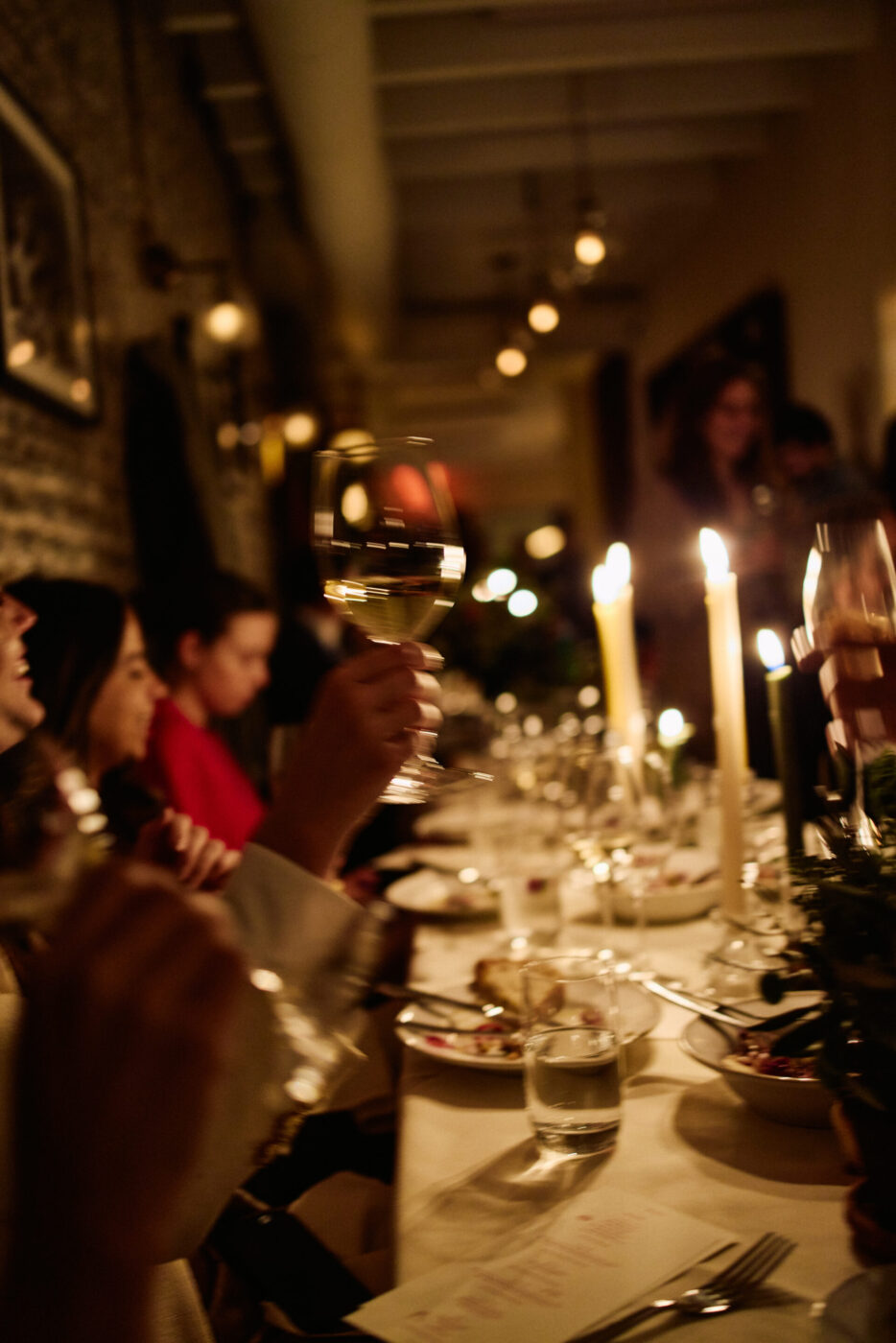For Felice managing partner Jacopo Giustiniani, the secret to a great New York restaurant isn’t the pasta—it’s the lighting. Nearly two decades ago, the Florence native—a man who finds New York too fast and Florence too slow, who hates salmon but keeps it on the menu because New Yorkers eat it “like bears”—looked at the stuffy, formal dining rooms of the Upper East Side and decided the neighborhood needed a place to relax. His answer was Felice, a wine bar conceived to be “the extension of the living room or the kitchen of every New Yorker.”
That simple philosophy has since spawned an empire, and with dozens of locations under his belt, he’s proven his instincts right. We sat down with the ever-expanding restaurant’s founder to talk about the art of the date spot, why he’ll never approve of the Espresso Martini (“it’s offensive”), and his plan for the future of Italian food in the US.
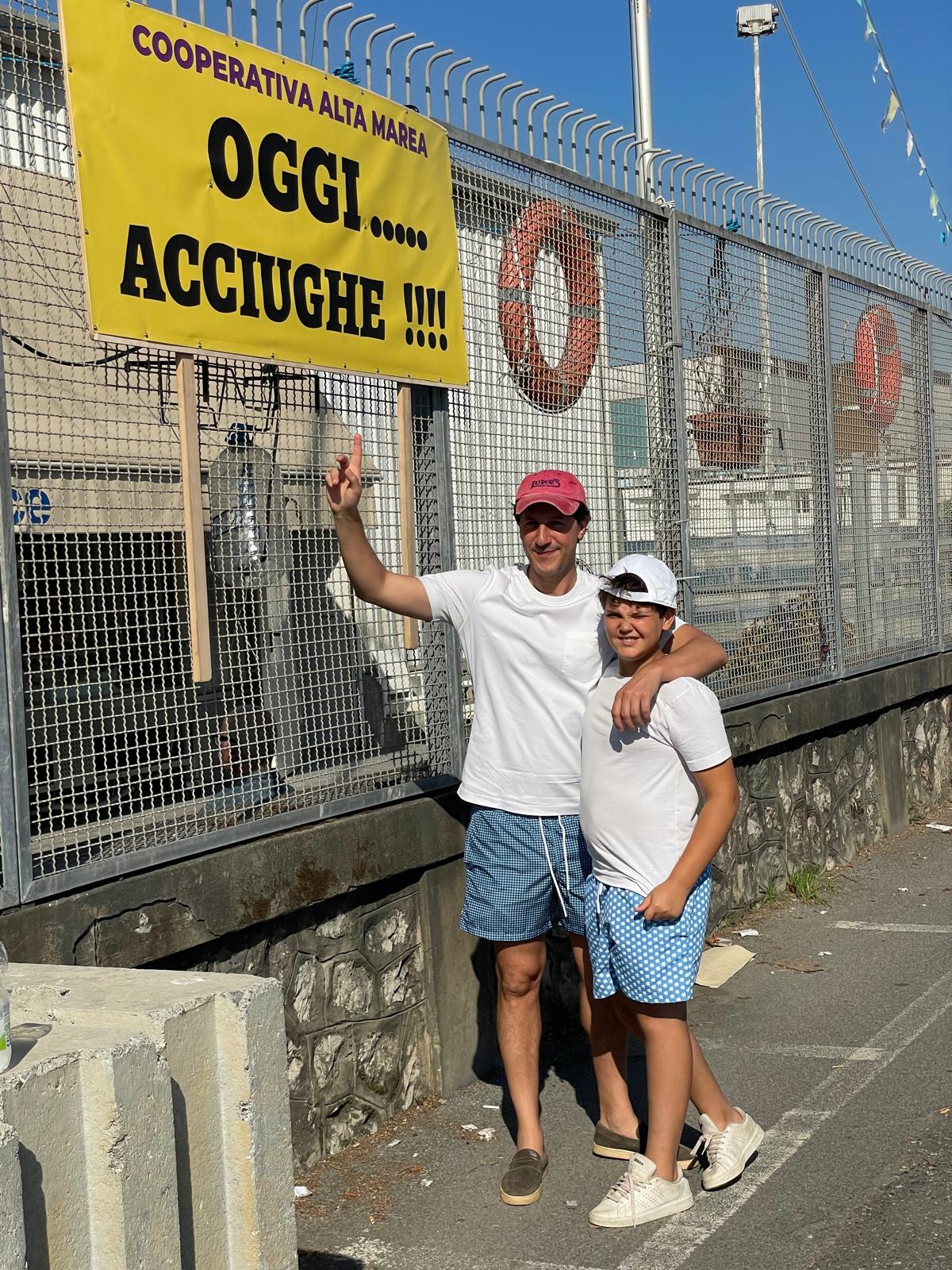
Jacopo and his son: Courtesy of Felice
Italy Segreta: Could you tell us about how Felice started? What was your initial idea, and why did you want to open a restaurant in New York City?
Jacopo Giustiniani: I first started going to New York when I was in high school. I used to spend my summers working for my uncle and partner, Gherardo Guarducci, who at the time had a small chain of kiosks that sold focaccia, including a few in Bryant Park and on Third Avenue. I remember loving it—not just dealing with food, but dealing with food in New York. I was attracted to the energy and the scalability of doing business in the city as a young student from Florence.
IS: So you always knew you were more of an entrepreneur than a traditional restaurateur?
JG: Exactly. I don’t come from a family of restaurateurs. I’m more of an entrepreneur who ended up in the food industry because it’s my main passion and it connects well to my family history, as my family owns a winery. After I finished business school in Florence, I moved back to New York for good when I was 24 or 25. I worked for a year at Sant Ambroeus on Madison Avenue, which my uncle had purchased in 2003.
IS: And it was from that experience that you identified a gap in the market?
JG: Yes, after about a year and a half, I realized that something was missing on the Upper East Side. This was around 2006, and there wasn’t a single wine bar—a relaxed environment where you could go for an amazing glass of wine and some crostini. I remember all the other restaurants in the neighborhood were quite formal, with tablecloths and waiters dressed in a very classic style. I thought there was potential for a different kind of energy.
IS: How did it go with that initial wine bar concept?
JG: We realized two things pretty soon. First, selling glasses of wine and crostini wasn’t enough to pay an Upper East Side rent. And second, we learned that when customers thought of an Italian place, they wanted pasta. So, within a few months of opening, our menu had to become more like a restaurant’s, and we slowly became a bit more of what you would call an osteria today. Back then, we thought it would take too long to explain what an osteria was to customers, so we decided to call it “Ristorante and Wine Bar” to make it simple. That’s how it started—from the dream of a wine bar to what it is now.
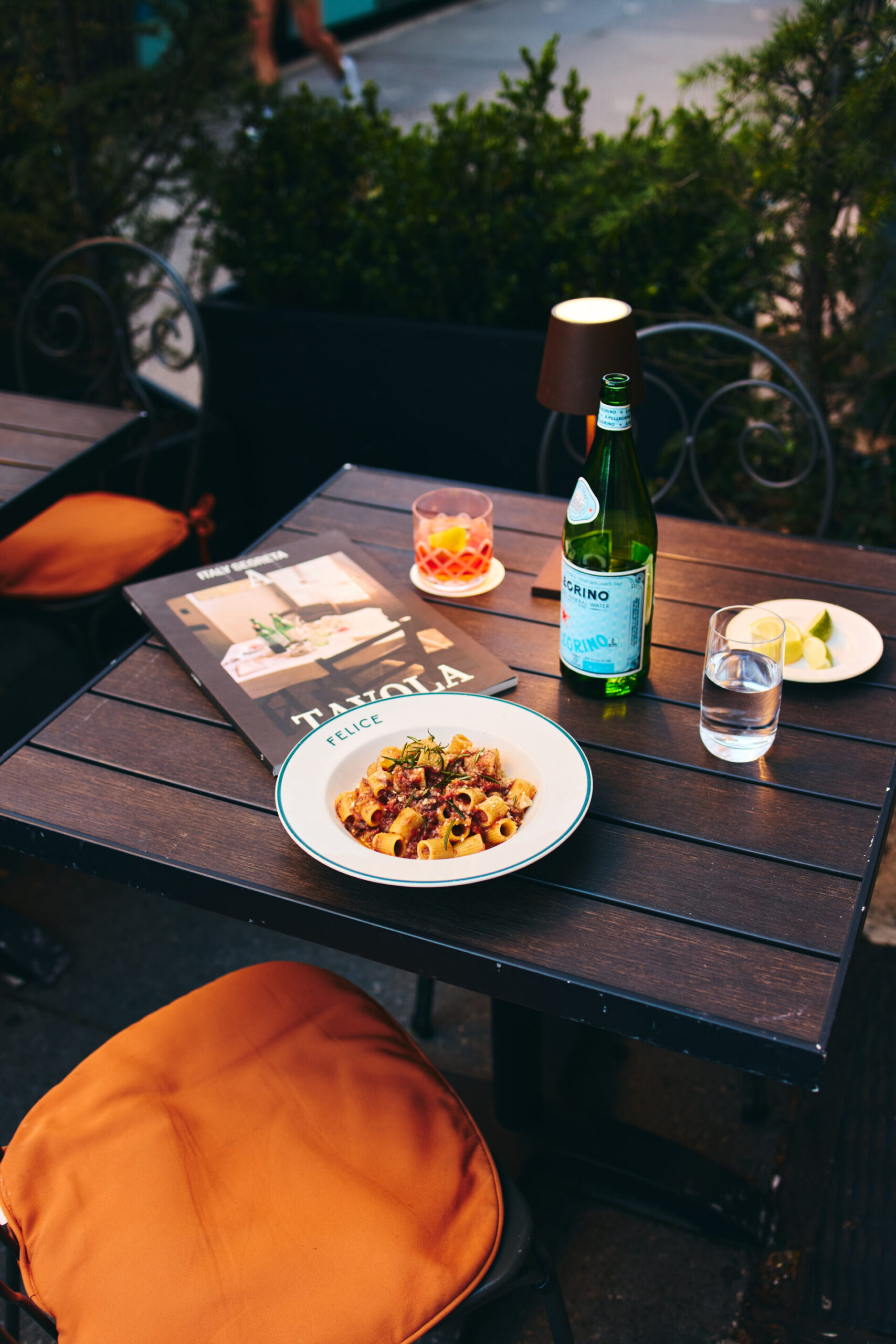
Courtesy of Felice
IS: The atmosphere in your restaurants feels both welcoming and authentically Italian, but without falling into stereotypes. How do you achieve that?
JG: There are two main components. The first is hospitality. I always tell my team that Felice needs to be the extension of the living room or kitchen for every New Yorker—because, as we unfortunately know, New York apartments are very small. The second, and most important, element is the lighting.
IS: It’s amazing how much of a difference lighting can make.
JG: It’s crucial. Having the right lighting helps create a space where everyone feels more beautiful and comfortable. I still think the first two Felice locations, on 64th and 83rd, have the best lighting of all.
IS: They sound like great date spots.
JG: Yes, the restaurants became very popular for dates. I have so many couples who come to me and say, “I had my first date to meet my wife there!” It’s beautiful. We were able to create momentum and memories that helped us develop the brand over the years. Funny enough, we’ve followed them as they’ve grown. We have so many people that met in the city and then moved to Long Island or Westchester to build a family, and we’ve opened locations there, too. We grow as a business, and they grow with us.
IS: Could you tell us about your culinary philosophy? How has it changed over the years?
JG: For the past 10 years, we’ve had an amazing culinary director, Iacopo Falai, who is also from Florence. We started out very Tuscan-driven, but today we’ve become more transcendent, taking inspiration from the center to the north of Italy.
IS: Do you still keep a connection to your Tuscan roots?
JG: Of course. To maintain our DNA, every week we have an insert in the menu with three additional dishes that come from Tuscan tradition, like pappa al pomodoro or crostini neri. The reality is that Tuscan food can be quite heavy: customers love to eat it when they’re in Florence, but it’s not something you can eat 365 days a year.
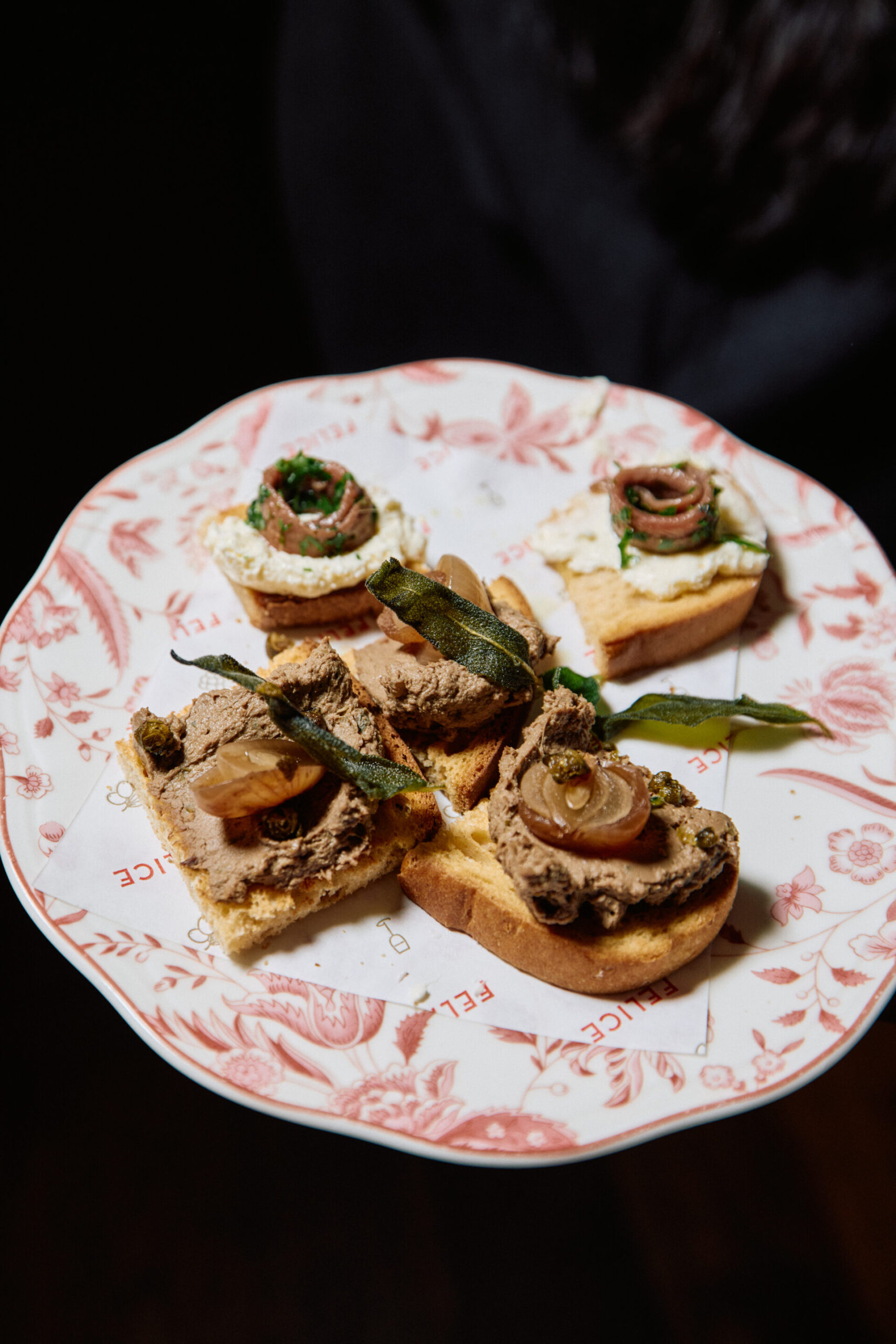
Crostini neri (chicken liver paté); Courtesy of Felice
IS: When adapting an Italian menu for New Yorkers, are there any popular dishes you’ve had to include that you wouldn’t personally choose?
JG: Salmon. New Yorkers are obsessed with salmon. They eat salmon like they’re bears. The market wants it, but is it a good fish? No, I don’t think it’s a good fish.
IS: Do you have a favorite dish on the menu?
JG: The tagliata di manzo. I eat red meat probably two or three times a week. It’s the way I grew up. For us in Florence, going out on a Friday or Saturday meant getting a bistecca alla fiorentina or a tagliata.
IS: In the New York food scene, trends come and go. Are there any Italian food trends you particularly dislike?
JG: I never understood the trend of fresh pasta for everything. We have a few fresh pastas, like ravioli, which I understand, but for other dishes, a quality dry pasta is so much better. Another one is the Espresso Martini. To me, it doesn’t make any sense; it’s really offensive. Now I heard they want to make them with tequila. Sounds even worse.
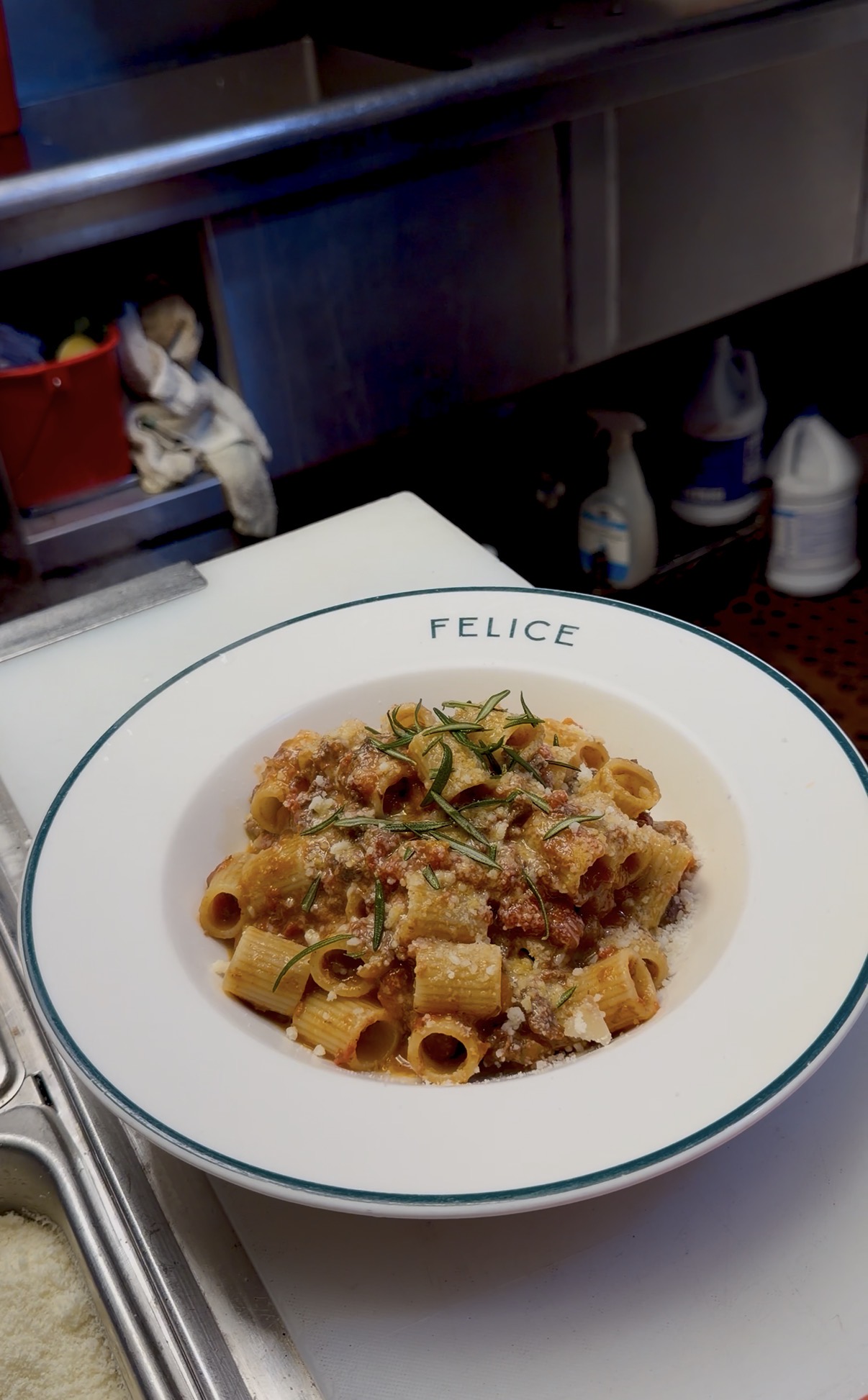
Mezze maniche alla chiantigiana
IS: Conversely, is there a trend you feel has been a positive adaptation?
JG: Yes, the way cacio e pepe has been reinterpreted in the United States. When I have it in Rome, I find it too dry and too salty. You have to drink a whole bottle of San Pellegrino after. I think the way it’s generally done in America—sometimes with a touch of butter—is more approachable and balanced. I’m sure every Roman is gonna be so upset to hear this. But if they want to eat two pounds of pecorino salato and black pepper, that’s their problem.
IS: What is one thing you wish more people in the US understood about Italian cuisine?
JG: I would like for the perception of pasta to change. It’s still seen as something very heavy, but for us, it’s never a main course; it’s always a primo. I also think the future is going to be in extra virgin olive oil. The United States has finally understood how much healthier it is, and I don’t think Italy will be able to produce enough to meet the coming demand.
IS: Is there an Italian ingredient you’d love to see more of in the US?
JG: I think we need to start working with beans. There are so many kinds, and we have such a great tradition in Italy of cooking with them. I think they really can be the future. And I’m not talking about buying beans from a can. I’m talking about buying the beans, putting them in water for a day, and then cooking them with a little bit of garlic and onion and a touch of olive oil. Also, I can’t take quinoa anymore. It’s so dry, with no taste at all. It’s such a bad grain. We need to move away from it… to beans.
This interview has been edited from the original for length and clarity.
